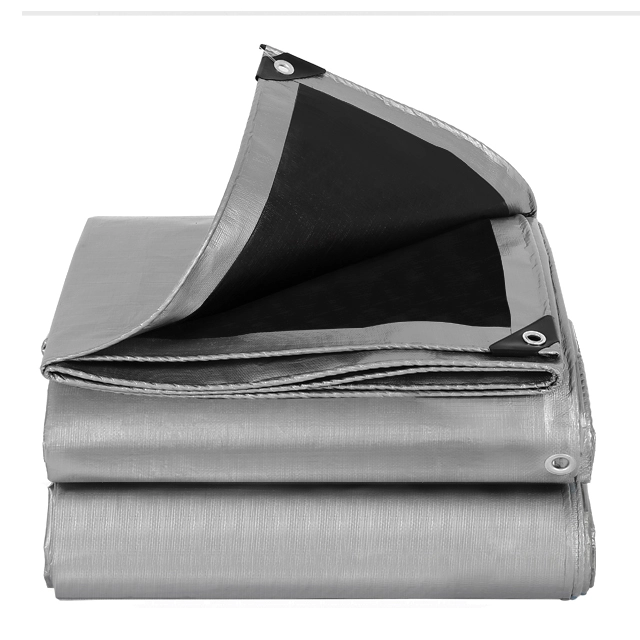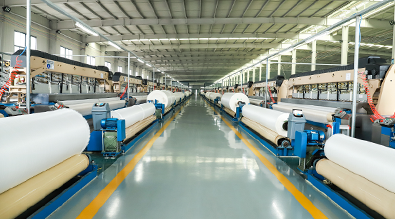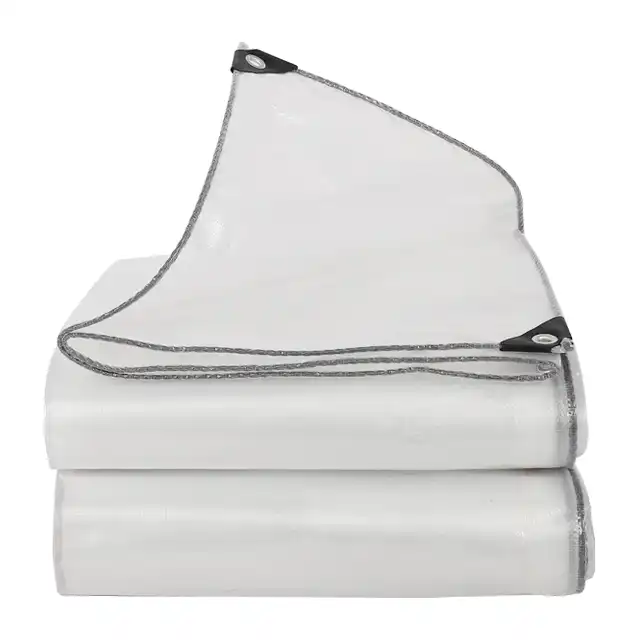Understanding Different Coatings for Tarpaulin Fabrics
Have you ever experienced the frustration of watching your valuable cargo get soaked during transport, or seen your outdoor equipment deteriorate rapidly under harsh sun exposure? The secret to preventing these costly damages lies in understanding tarpaulin coatings. When selecting protective coverings for industrial, agricultural, or commercial applications, the coating technology applied to tarpaulin fabrics makes all the difference between short-term temporary protection and long-lasting, reliable performance. This comprehensive guide explores the various coating types used in modern tarpaulin manufacturing, helping you make informed decisions that protect your investments and ensure operational efficiency in even the most challenging environmental conditions.
What Are Tarpaulin Coatings and Why Do They Matter?

Tarpaulin coatings represent the protective layers applied to woven fabric substrates that transform basic textile materials into high-performance protective covers. The coating process involves applying polymeric materials to one or both surfaces of the base fabric, creating a barrier that enhances waterproofing, UV resistance, tear strength, and durability. Without proper coating technology, even the strongest woven fabrics would quickly succumb to water penetration, ultraviolet degradation, and environmental wear. The importance of selecting the right tarpaulin coating cannot be overstated in today's demanding industrial landscape. Whether you need protection for agricultural equipment during monsoon seasons, secure covering for long-haul truck transportation across desert highways, or emergency shelter materials for humanitarian relief operations, the coating technology determines how well your tarpaulin performs under stress. Modern coating formulations incorporate advanced chemical additives including UV stabilizers, antimicrobial agents, flame retardants, and plasticizers that extend service life and enhance functionality across diverse application scenarios.
-
The Role of Base Fabrics in Coating Performance
Before examining specific coating types, understanding the base fabric is essential because it serves as the skeleton that supports the coating layer. High-density polyethylene woven fabrics provide excellent dimensional stability and tensile strength, making them ideal substrates for lamination coating processes. The woven structure creates a mesh pattern with consistent thread counts, typically ranging from 10x10 to 14x14 meshes per square inch, which determines the coating adhesion and overall fabric integrity. Polyester fabrics offer superior strength-to-weight ratios compared to traditional cotton canvas materials, which is why many manufacturers now use high-tenacity polyester filament yarns as their base material. These synthetic fibers resist moisture absorption, dimensional changes, and biological degradation that would compromise natural fiber alternatives. When selecting tarpaulin products, examining both the base fabric specifications and coating technology ensures you receive materials engineered for your specific performance requirements and environmental challenges.
LDPE and HDPE Lamination Coating Technologies
-
Understanding Polyethylene Lamination Processes
Low-density polyethylene and high-density polyethylene lamination represents one of the most widely used coating methods in tarpaulin manufacturing, particularly for budget-conscious applications requiring reliable waterproof protection. The lamination process involves applying thin polyethylene films to one or both sides of woven high-density polyethylene fabric, creating a three-layer composite structure that combines the strength of woven textiles with the impermeability of plastic films. This manufacturing technique allows for rapid production rates and excellent cost-efficiency while maintaining functional performance characteristics. The LDPE coating layer provides flexibility and conformability, allowing the tarpaulin to drape over irregularly shaped loads without cracking or splitting at fold points. LDPE molecules have branched chain structures that create more space between polymer chains, resulting in lower crystallinity and enhanced flexibility compared to HDPE materials. This characteristic makes LDPE-laminated tarpaulins particularly suitable for applications involving frequent folding and unfolding, such as truck covers, temporary shelters, and agricultural protection where the material must conform to various shapes and dimensions. HDPE fabrics coated with LDPE films achieve waterproof ratings exceeding standard industry requirements, with properly sealed seams preventing water ingress even during prolonged exposure to heavy rainfall. The lamination process creates molecular bonding between the coating and substrate layers through heat and pressure application, ensuring the coating remains firmly attached throughout the product lifecycle. Manufacturing facilities utilize sophisticated coating machines with precise temperature controls, pressure rollers, and tension management systems to produce consistent coating thickness typically ranging from 7 to 12 mils depending on the intended duty classification.
-
Advantages and Applications of PE-Coated Tarpaulins
Polyethylene-coated tarpaulins dominate market segments where lightweight, affordable, and water-resistant protection is required for short to medium-term outdoor use. These materials excel in construction site applications, providing temporary weather barriers for building materials, equipment storage, and ground covers that prevent moisture migration. The lightweight nature of PE tarpaulins, typically weighing between 65gsm and 180gsm depending on thickness specifications, makes them easy to handle, transport, and install without requiring heavy lifting equipment or multiple workers. Agricultural operations worldwide rely on PE-coated tarpaulins for protecting harvested crops, covering greenhouse structures, and creating temporary storage solutions during peak seasons. The material's resistance to rot, mildew, and biological degradation ensures reliable performance even in humid tropical climates where organic materials would rapidly deteriorate. UV treatment additives incorporated during the coating process provide protection against harmful solar radiation, with treatment levels ranging from 1% to 7% depending on expected sun exposure duration and intensity in the deployment environment. Emergency relief organizations including UNHCR, IOM, ICRC, and UNICEF specify PE tarpaulins for humanitarian shelter applications because these materials offer rapid deployment capabilities, cost-effective procurement, and adequate protection for displaced populations in crisis situations. The standardized sizes available from major manufacturers ensure compatibility with international relief logistics systems, while the color coding helps organize distribution and identify different shelter specifications. For commercial users seeking economical protection solutions, PE-coated tarpaulins deliver excellent value when properly matched to application requirements and expected service duration.
PVC Coating Technology for Heavy-Duty Applications
-
Knife Coating and Hot-Melt PVC Processes
Polyvinyl chloride coating technology represents the premium tier of tarpaulin manufacturing, delivering superior durability, tear resistance, and multi-season performance for demanding industrial applications. The knife coating process involves applying viscous PVC polymer formulations directly to polyester base fabrics using precision blade applicators that control coating thickness with exceptional accuracy. The coated fabric then passes through heating chambers where the polymer undergoes curing through polymerization reactions, creating strong chemical bonds between the coating and textile substrate that ensure long-term adhesion even under mechanical stress. Hot-melt PVC lamination offers an alternative manufacturing approach where pre-formed PVC films are applied to fabrics using heated rollers that melt the thermoplastic polymer and press it into the textile structure. This method achieves faster production rates compared to knife coating techniques, making it economically attractive for large-volume manufacturing operations. The hot-melt process typically employs Zimmer or Bema machine configurations with multiple melt rollers that maintain precise temperature and pressure parameters throughout the lamination sequence, ensuring consistent coating quality across wide fabric widths up to 5 meters. Both knife coating and hot-melt processes produce PVC-coated tarpaulins with exceptional mechanical properties, including high tensile strength, excellent puncture resistance, and superior abrasion tolerance compared to PE-laminated alternatives. The PVC coating formulation incorporates various chemical additives including plasticizers for flexibility, stabilizers for thermal resistance, flame retardants for fire safety compliance, and antimicrobial agents for applications requiring hygiene standards. Professional technicians monitor coating quality throughout production using advanced testing equipment that measures coating thickness, adhesion strength, tear propagation resistance, and waterproof integrity according to international quality standards.
-
Performance Characteristics of PVC-Coated Tarpaulins
PVC-coated tarpaulins deliver 100% waterproof performance with welded seam construction that eliminates potential leak points present in sewn seam alternatives. The welding process uses heat and pressure to fuse overlapping tarp sections, creating molecular bonds that are stronger than the base material itself. This manufacturing technique proves essential for applications where absolute water-tightness is required, such as swimming pool liners, aquaculture pond covers, and chemical containment barriers where even minor leakage could cause significant problems. The material's resistance to oils, acids, greases, and industrial chemicals makes PVC-coated tarpaulins indispensable for manufacturing facilities, chemical processing plants, and automotive transportation where cargo may contain corrosive or contaminating substances. Unlike canvas or PE materials that absorb and retain chemical residues, PVC coatings create impermeable barriers that can be easily cleaned and decontaminated, maintaining hygiene standards across repeated use cycles. This characteristic has made PVC the preferred material for food-grade applications, pharmaceutical transportation, and healthcare facility deployments where contamination prevention is paramount. Flame retardant PVC formulations meet stringent fire safety regulations required in construction sites, event venues, and public assembly applications. The coating incorporates halogenated compounds and inorganic fillers that inhibit combustion propagation, self-extinguish when ignition sources are removed, and produce minimal toxic smoke during exposure to fire conditions. Testing certifications from internationally recognized laboratories verify compliance with standards such as NFPA 701, BS 5438, and DIN 4102, providing documentation necessary for regulatory approvals and insurance requirements in safety-conscious industries.
UV Protection and Weather-Resistant Coating Additives
-
Nano-Technology UV Stabilization Systems
Ultraviolet radiation represents one of the most destructive environmental factors affecting outdoor tarpaulin performance, causing polymer chain degradation, color fading, and progressive loss of mechanical strength over time. Advanced UV protection coatings incorporate nano-scale inorganic compounds including titanium dioxide and zinc oxide that absorb or reflect harmful UV wavelengths before they can damage the base polymer structure. These nanoparticles function at the molecular level, creating a protective shield that significantly extends tarpaulin service life in high-exposure environments such as desert regions, tropical climates, and high-altitude locations where UV intensity exceeds standard conditions. The concentration of UV stabilizer additives typically ranges from 1% to 7% of the total coating formulation, with higher percentages specified for extreme exposure applications. Manufacturers calibrate UV treatment levels based on expected deployment conditions, with agricultural covers requiring moderate protection for seasonal use, while permanent architectural fabric structures demand maximum UV resistance for multi-year outdoor exposure. High-strength yarn specifications combined with optimized UV protection enable premium tarpaulins to maintain structural integrity and functional performance for extended periods, reducing replacement frequency and total cost of ownership. Research into next-generation UV protection systems has produced heat-reflective coating technologies that not only block harmful radiation but also reduce surface temperature through enhanced solar reflectivity. These advanced coatings incorporate specialized pigments and reflective particles that bounce infrared wavelengths back into the atmosphere rather than absorbing thermal energy. The resulting temperature reduction provides multiple benefits including improved comfort under covered areas, reduced thermal stress on protected equipment, and lower degradation rates for the tarpaulin material itself, creating a synergistic effect that maximizes product longevity.
-
Color Selection and Heat Management
Color selection significantly impacts tarpaulin thermal performance, with light-colored materials reflecting substantially more solar energy than dark alternatives. White, silver, and light blue tarpaulins can reduce surface temperatures by 15-25 degrees Celsius compared to black or dark green options under identical sun exposure conditions. This temperature differential affects not only the comfort of spaces beneath the tarp but also the rate of polymer degradation, as elevated temperatures accelerate chemical breakdown processes and reduce material lifespan. Dark-colored tarpaulins offer advantages in specific applications where heat absorption provides functional benefits, such as greenhouse covers designed to capture solar energy for plant growth or snow-melting applications where thermal gain speeds ice removal. However, for general protective covering purposes, lighter colors deliver superior performance by minimizing heat buildup that can damage temperature-sensitive cargo, reduce energy costs in covered storage facilities, and prevent thermal discomfort in sheltered work areas. Modern color masterbatch technologies allow manufacturers to produce tarpaulins in virtually any color while maintaining consistent UV protection and coating integrity. Breathable coating formulations address moisture management challenges in applications where vapor transmission prevents condensation accumulation. Traditional waterproof coatings create completely impermeable barriers that trap moisture vapor, leading to condensation formation on protected surfaces that can cause corrosion, mold growth, and material degradation. Microporous coating technologies incorporate microscopic pore structures that allow water vapor molecules to pass through while still blocking liquid water penetration, effectively managing humidity levels while maintaining weather protection. These specialized coatings prove particularly valuable for equipment storage, agricultural applications, and camping shelters where condensation control enhances user comfort and protects contents from moisture-related damage.
Specialized Coating Formulations for Specific Applications
-
Fire-Retardant and Antimicrobial Coatings
Fire-retardant coating formulations address critical safety requirements in construction environments, event venues, and industrial facilities where fire hazards pose significant risks to personnel and property. These specialized coatings incorporate chemical compounds that interfere with combustion processes, releasing inert gases that dilute flammable volatiles, forming protective char layers that insulate underlying materials, and absorbing thermal energy that would otherwise propagate flame spread. The resulting tarpaulins meet stringent fire safety classifications, enabling their use in applications where standard materials would be prohibited by building codes and safety regulations. Antimicrobial coatings prevent the growth of bacteria, fungi, and mold on tarpaulin surfaces, maintaining hygiene standards in healthcare facilities, food processing operations, and humanitarian shelter applications. These coatings incorporate biocidal agents including silver nanoparticles, quaternary ammonium compounds, and organic fungicides that create hostile surface environments for microbial colonization. The antimicrobial protection remains effective throughout the product lifecycle, continuously preventing contamination even after repeated exposure to moisture and organic matter that would support biological growth on untreated materials. Chemical-resistant coating specifications protect tarpaulins deployed in industrial environments where exposure to corrosive substances, petroleum products, and harsh chemicals would rapidly degrade standard materials. These formulations use specialized polymer matrices with enhanced chemical stability, incorporating cross-linking agents that create three-dimensional molecular networks resistant to solvent penetration and chemical attack. The resulting materials maintain structural integrity and protective function even after prolonged contact with acids, bases, hydrocarbons, and industrial solvents that would dissolve or weaken conventional tarpaulin coatings.
-
Arctic Flexibility and Anti-Static Properties
Cold-weather applications require coating formulations that maintain flexibility at sub-zero temperatures where standard materials become brittle and prone to cracking. Arctic-grade tarpaulins incorporate plasticizer systems that prevent crystallization and maintain polymer chain mobility even at temperatures below -40 degrees Celsius. These specialized materials enable reliable operation in polar regions, high-altitude environments, and winter applications where equipment protection cannot be compromised by material failure due to cold-induced brittleness. Anti-static coating additives address safety concerns in environments where static electricity accumulation could trigger explosions or fires near flammable materials. The coatings incorporate conductive fillers and surface-active agents that allow electrostatic charges to dissipate harmlessly rather than building to dangerous discharge potentials. Industries handling combustible dusts, volatile solvents, and explosive materials specify anti-static tarpaulins as essential safety measures that complement other hazard control protocols, reducing accident risks in inherently dangerous operating environments. Shrink-proof treatments ensure dimensional stability across temperature fluctuations and humidity variations that would cause untreated materials to expand and contract. The treatment process involves heat-setting procedures that relax internal stresses in woven fabrics and stabilize coating adhesion, producing tarpaulins that maintain consistent dimensions throughout their service life. This characteristic proves critical for applications requiring precise fit, such as truck covers with specific dimensional requirements, architectural tension structures where fabric stability affects structural integrity, and industrial curtains where gaps created by shrinkage would compromise environmental separation.
Conclusion
Selecting the appropriate tarpaulin coating technology determines whether your protective covers deliver reliable long-term performance or require frequent replacement due to premature failure. Understanding the distinctions between LDPE lamination, HDPE coating, PVC knife coating, and hot-melt processes enables informed purchasing decisions aligned with your specific application requirements, environmental conditions, and budget constraints. By matching coating characteristics including UV protection, fire resistance, chemical tolerance, and temperature performance to your operational needs, you ensure maximum value and protection for your investments in equipment, cargo, and infrastructure across diverse industrial, agricultural, and commercial applications.
Cooperate with Linyi Shengde Plastic Co., Ltd.
When you require a China tarpaulin factory that delivers exceptional quality and reliable performance, Linyi Shengde Plastic Co., Ltd. stands as your trusted partner with over 20 years of manufacturing excellence in PE tarpaulin production. As a leading China tarpaulin supplier and China tarpaulin manufacturer, we operate state-of-the-art facilities featuring 400+ Korea-imported automatic water-jet looms, advanced coating machines producing fabrics up to 5 meters wide, and comprehensive quality control systems certified to ISO 9001:2015 standards. Our partnerships with UNHCR, IOM, ICRC, and UNICEF demonstrate our commitment to delivering High Quality tarpaulin products that meet the most demanding international specifications.
Whether you need China tarpaulin wholesale for large-scale projects or custom-engineered solutions with specific coating formulations, our experienced R&D team develops products tailored to your exact requirements. We offer competitive tarpaulin price structures without compromising quality, with tarpaulin for sale options ranging from 65gsm to 280gsm specifications suitable for diverse applications including truck covers, aquaculture protection, construction barriers, and agricultural shelters. Our monthly production capacity exceeds 4,000 metric tons, ensuring prompt delivery schedules that keep your projects on track. Contact us today at info@shengdetarp.com to discuss your tarpaulin requirements and discover how our technical expertise, manufacturing capabilities, and customer-focused service approach deliver superior protection solutions for your specific applications. Save this article for future reference when making critical decisions about protective covering materials and coating technologies.
References
1. Johnson, M. & Williams, R. (2023). "Technical Textiles: Coating Technologies and Applications in Protective Fabrics." Journal of Industrial Textiles, Vol. 52(4), pp. 567-589.
2. Zhang, L., Chen, X. & Kumar, S. (2024). "Advances in Polyethylene and PVC Coating Systems for Weather-Resistant Tarpaulin Materials." Polymer Engineering and Science, Vol. 64(2), pp. 234-256.
3. Anderson, P., Thompson, K. & Martinez, D. (2022). "UV Stabilization and Heat Resistance in Coated Technical Fabrics: A Comprehensive Analysis." Textile Research Journal, Vol. 92(19-20), pp. 3456-3478.
4. Rahman, A., Hassan, M. & Liu, Y. (2025). "Comparative Performance Analysis of Lamination and Knife-Coating Processes in Industrial Tarpaulin Manufacturing." International Journal of Materials Science and Engineering, Vol. 13(1), pp. 89- 112.




